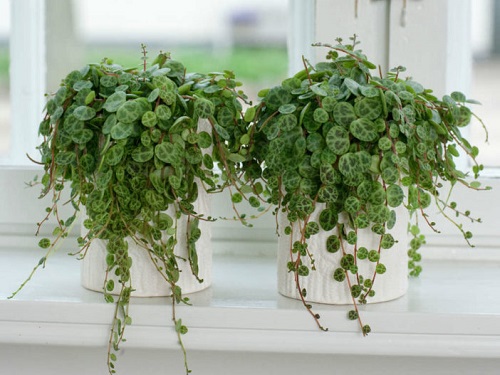Check out our detailed guide on String of Turtles Plant Care and Growing Information and grow this beautiful succulent today!
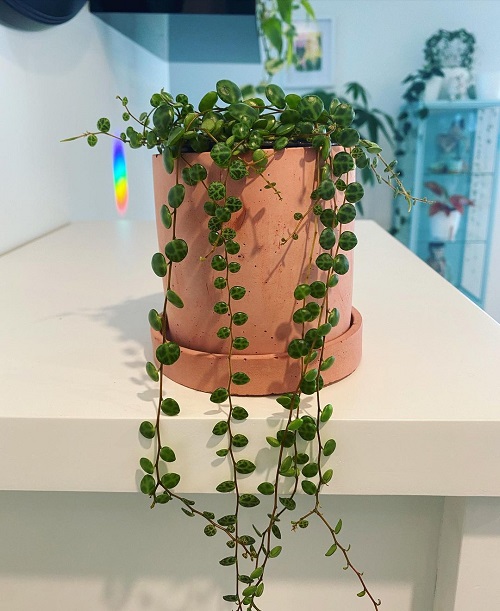
Here are all the details on String of Turtles Plant Care and Growing Information that will help you maintain it easily indoors. This slow-growing plant displays fleshy, tiny, dark green, and blue and looks like a turtle shell.
USDA Zones: 9-12
Common Names: Turtle plant, String of Turtles Plant, ‘Magic marmer’ – a select variety of Prostrata
Botanical Name: Peperomia Prostrata
Have a look at the Best String Succulents that Hang
String of Turtles Plant Information
Native to Brazilian rainforests, the String of Turtles Plant (Peperomia prostrate) belongs to the genus Peperomia and the family Piperaceae. This slow-growing semi-succulent perennial has fleshy, tiny, dark-green and blue, variegated, one-fourth-of-an-inch wide succulent leaves that look like a turtle shell, hence the common name.
It features a small-spadix form with trailing or creeping foliage and white veins, which range in shade from dark blue to purple to maroon and become silver-white with maturity.
The tiny cream flowers on long spikes have no fragrance. It creates a thick mat and spills over the rims of the container.
String of Turtles Plant with ornamental leaves and small size makes it an ideal choice for hanging baskets, dish gardens, terrarium plants, container gardens, and houseplants. The plant adapts well to household conditions.
Propagating String of Turtles Plant
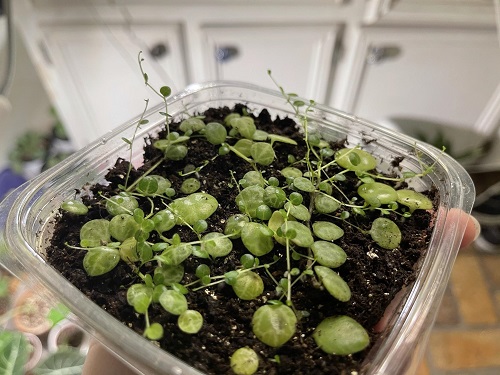
Gently remove a single leaf from the plant using a pair of scissors. Place the leaf in a container filled with a well-draining soil mix, such as a cactus potting mix. Place the container in a location that receives bright, indirect light. Keep the soil moist but not soggy, and mist the leaves regularly. After a few weeks, the leaf should produce roots and a new plant. When the new plant is large enough, it can be transplanted into a larger container.
Requirements for Growing String of Turtle Plant
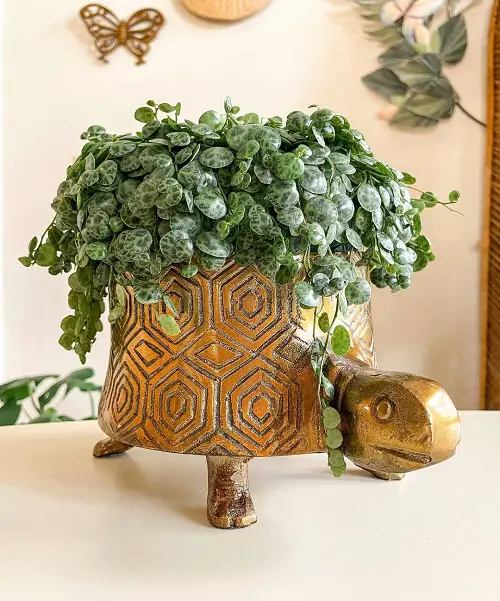
Sunlight
Grow your string of turtles where bright indirect sunlight falls on the plant. Do not place the plant in full sun for long as it damages the soft leaves. Too little light also impacts new growth. Ensure all parts of the plant are exposed to bright light.
Soil
The best soil for this plant is a well-draining potting mix that is made up of a combination of equal parts peat moss, perlite, and potting soil. The soil should also be slightly acidic or neutral, with a pH of 6.0-7.5.
Water
This succulent plant does not require frequent watering. Water the plant thoroughly, allowing the soil to become completely saturated, and then allow it to dry out completely before watering again. Over-watering can cause root rot and other problems.
When in doubt, it is better to underwater than to overwater. If the leaves become soft or wrinkly, it is an indication that the plant needs more water.
Temperature and Humidity
The best temperature for a string of turtle plants should be between 65 and 75°F (18°C to 24°C). Humidity should generally be kept around 40-50%. In dry summer months, use a humidifier or mist the plant.
Have a look at the 9 Plants That Look Like String of Hearts
String of Turtle Plant Care
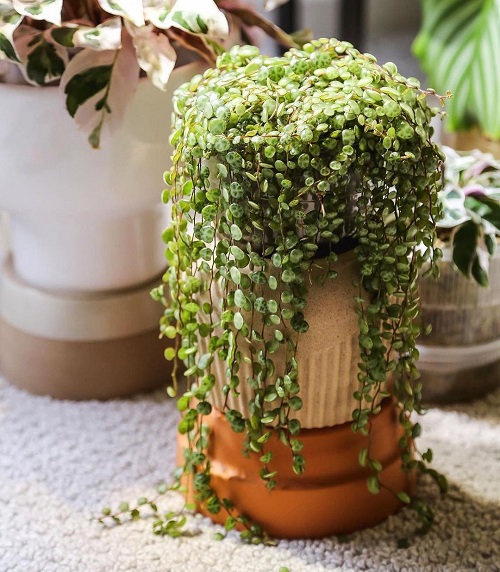
Fertilizer
Pick a fertlizer high in nitrogen and low in phosphorus. Look for a balanced fertilizer with an N-P-K ratio of 10-5-5 or 10-4-4.
Fertilize the plants every 2-4 weeks in the growing season using a water-soluble fertilizer diluted to half strength. Follow label instructions for exact application rates.
Pruning
Use clean, sharp scissors, pruning shears, or a small saw to cut off any dead, diseased, or damaged leaves, stems, or roots. Trim off any long or straggly vines to encourage a fuller, bushier-looking plant. If the plant has become too dense, you can trim off a few of the oldest leaves or cut off the top of the plant to promote new growth. Trim any vines that are growing too long or too close together to allow for better airflow.
If the plant is beginning to look unruly, you can trim off some of the older, lower leaves to give the plant a neat, tidy look.
Pests and Diseases
Usually, the string of turtle plants is not vulnerable to pests or diseases. But they can be attacked by mealybugs, whiteflies, and spider mites like common houseplants. If you notice an infection, use neem oil or insecticidal soap.
Do remember this succulent is sensitive to overwatering as it causes root rot if not planted in well-draining soil or a pot with drainage holes.


